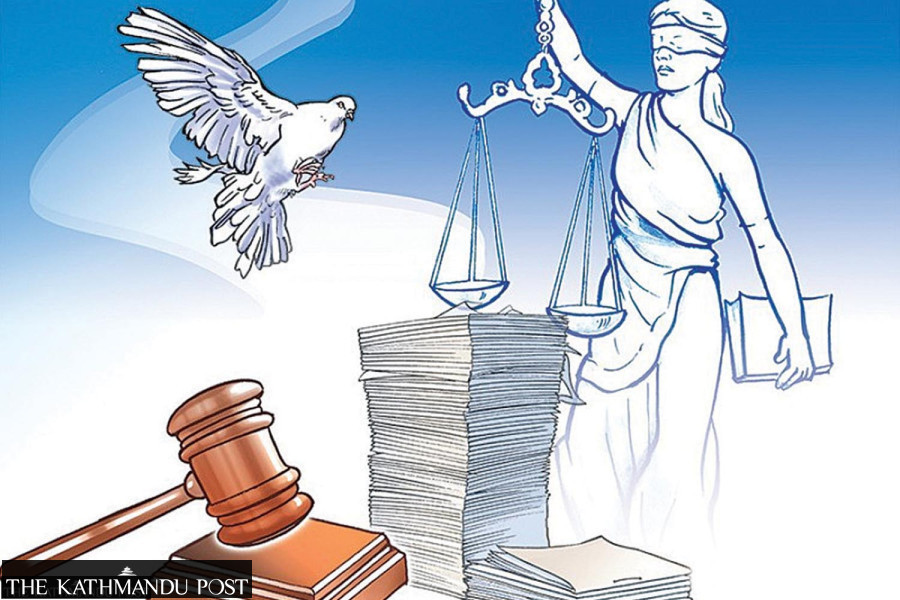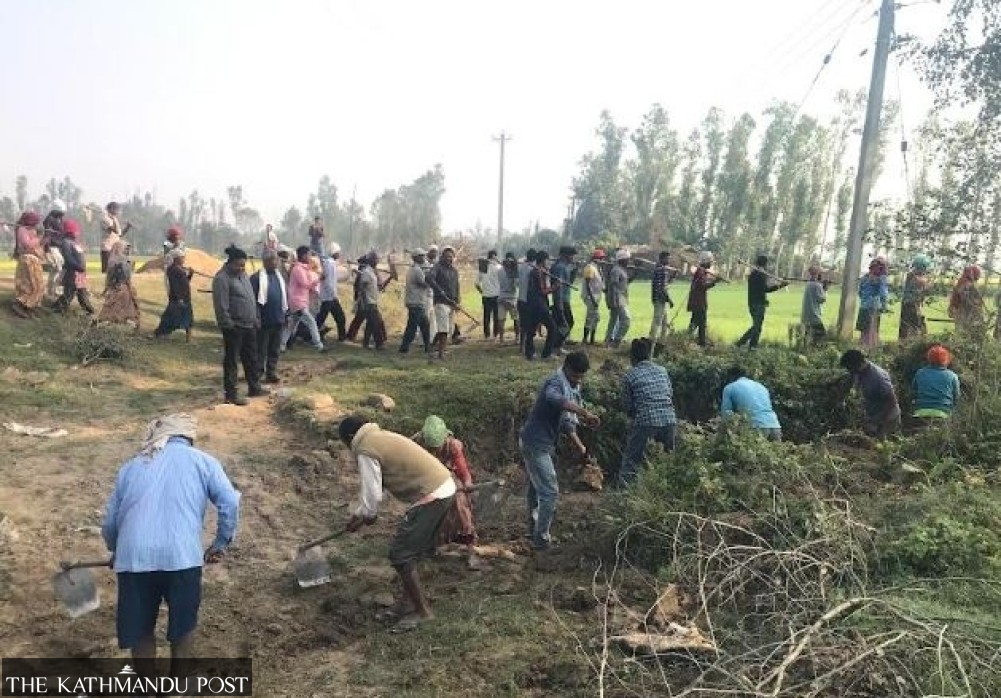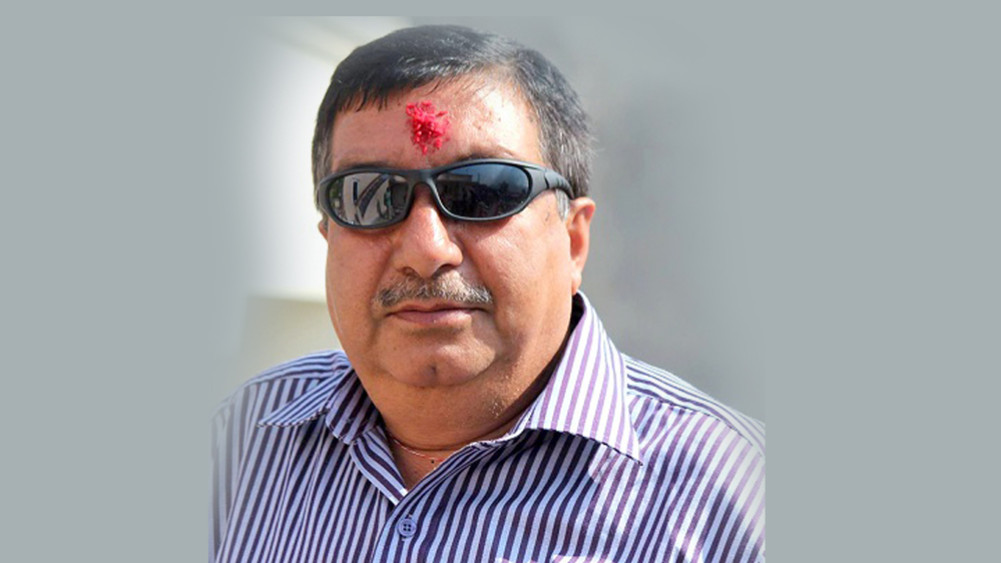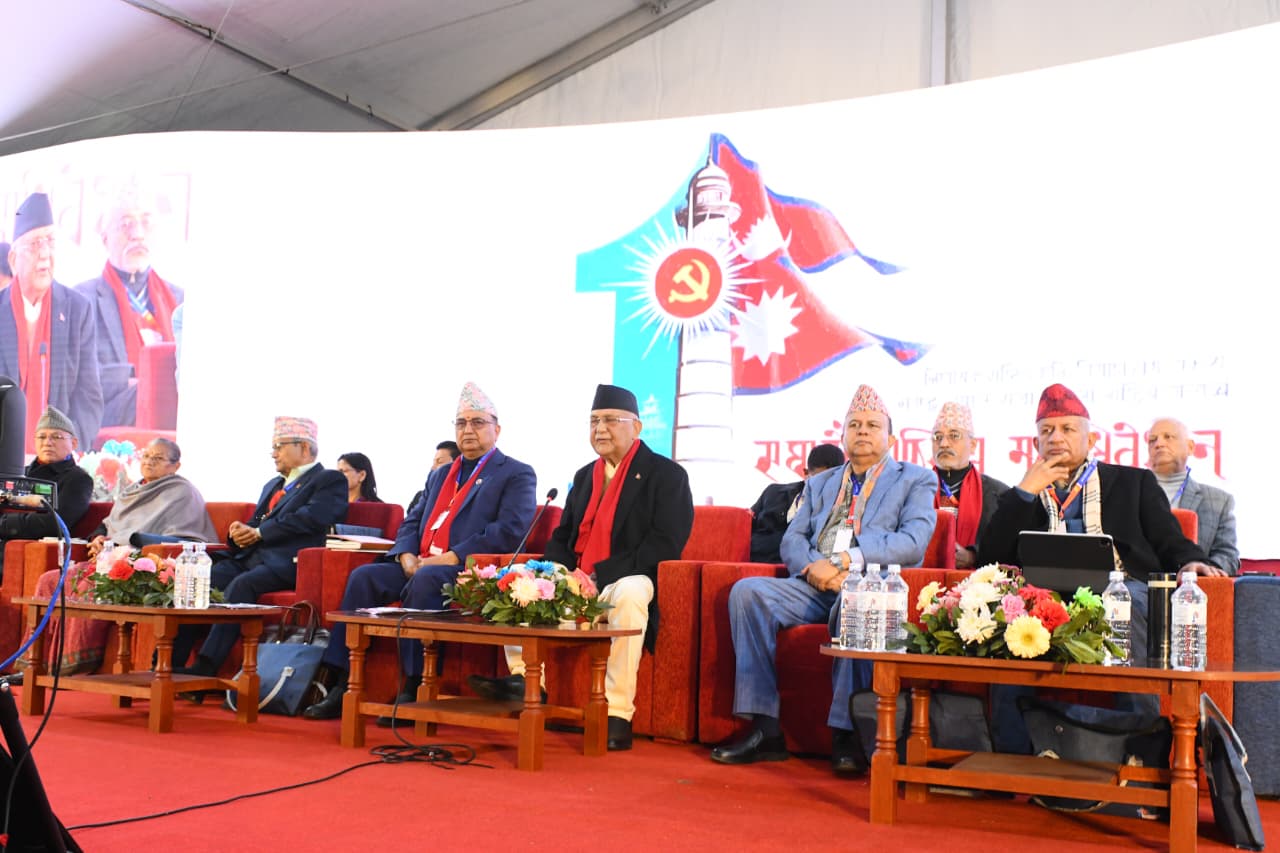National
The fight for fighting crime: Inside the Nepal Police’s investigation unit
The country’s crime investigation body has come a long way, but challenges persist.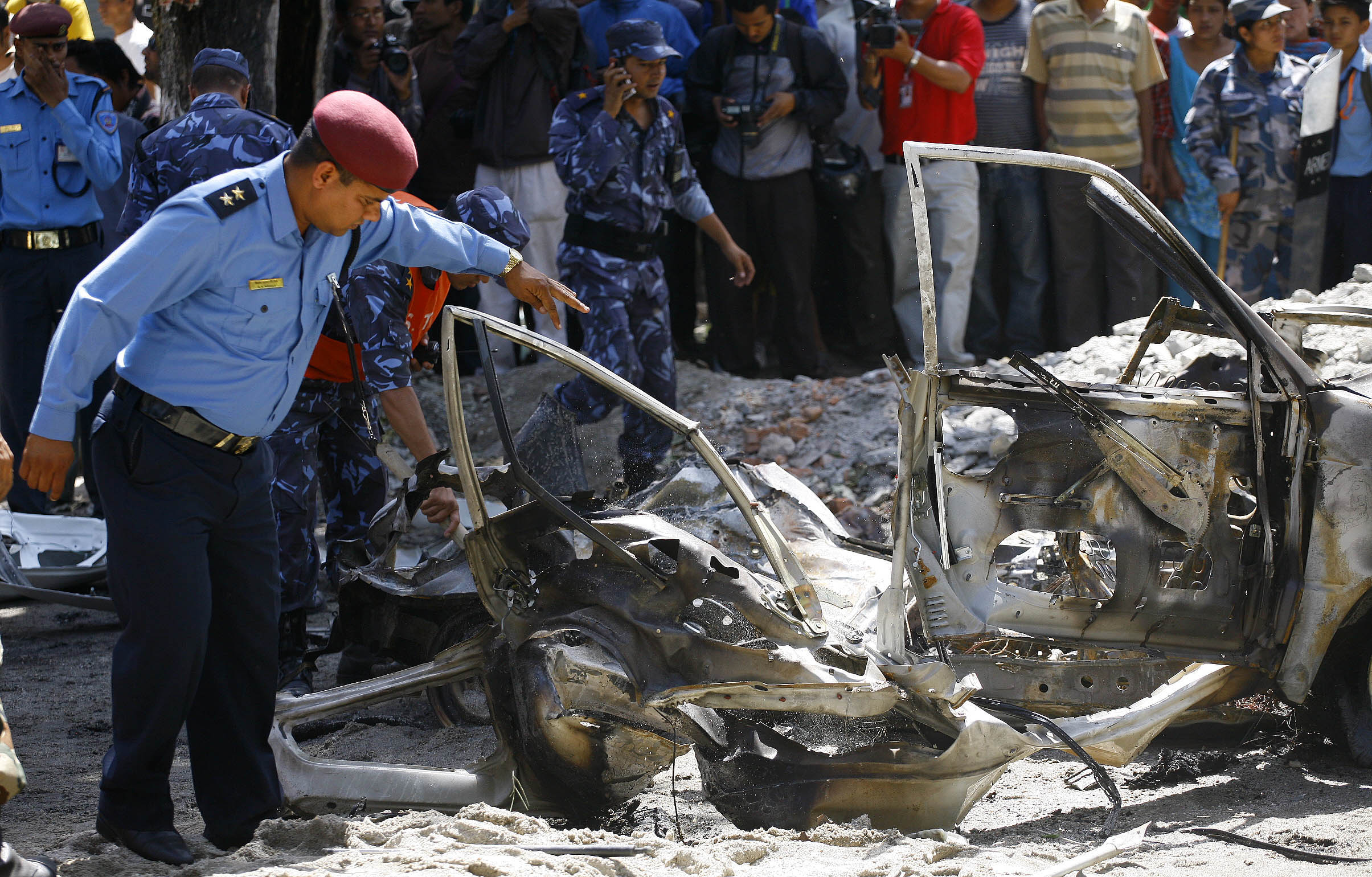
Shuvam Dhungana
It was 5:30 on a warm July morning in 2002 when Anjali Shrestha woke up to an insistent knock on her door. With her husband and four-year-old daughter still asleep, Anjali opened the door to find two familiar young men. They had visited the house a number of times in the past few weeks inquiring about the possibility of renting a flat.
The men asked after Geeta Khadka, Anjali’s landlord, and when she replied that Khadka was upstairs in her own flat, the two men took out a khukuri each and stabbed Anjali multiple times in the abdomen. They then dragged her body to the kitchen, leaving a trail of blood, before going into the bedroom and stabbing the husband and daughter.
Khadka, who had heard the screams, locked herself in the bathroom and screamed for help. It had been half-an-hour into the brutal attack and Khadka’s screams attracted the attention of the neighbours, leading the assailants to abandon the house and flee, throwing their bloody khukuris into a nearby bush.
Read: The murders at Ranibari
The police arrived at the Ranibari home 30 minutes later and discovered the couple and their daughter bleeding out from their wounds. They were rushed to the Tribhuvan University Teaching Hospital, but it was too late for Anjali and her husband. The daughter survived.
Shocked by the violence, the public had numerous questions: who were the two men, why was the family attacked and what was Khadka’s role? The case was dubbed the Ranibari Hatyakanda, and it made headlines across the country. The police immediately formed an investigation committee, but it would take over a decade and 18 different investigation committees before any answers emerged.
The Ranibari case is a microcosm of how the Nepal Police operates. The country’s civilian crime investigation body is plagued by a host of structural issues, including a lack of skilled investigators and forensic equipment, and a tendency to rely heavily on informants, according to former and current officials. The police tend to resolve cases when there are witnesses and informants, but when legwork, sleuthing and investigations are required, cases tend to languish for years.
In the Ranibari case, it would take 13 years before any significant headway was made. In 2014, Deputy Inspector General Hemanta Malla was appointed the chief of the Central Investigation Bureau, and it was under his leadership that the assailants were finally identified.
***
.jpg)
The Central Investigation Bureau is the Nepal Police’s specialised team of investigators that looks into cases that are of complex and profound nature. There are 174 officials who work at the bureau, and there are separate criteria that personnel need to fulfil to join.
“We started to investigate the case from the very beginning,” Malla, who is now retired, told the Post. “Our team studied all the reports prepared by those 18 committees and we tried to identify a common point that later helped us identify the culprits.”
According to Malla, an informant overheard two people talking in a restaurant about how one of them had not been implicated in the Ranibari case. The informant quickly told the police, who began to follow up on the two people who had been talking.
Malla’s team finally apprehended the men, one from Dolakha and the other from Ramechhap, in March 2015.
“We figured out that the couple did not have any dispute with any others and there were no financial benefits to killing them,” said Malla. “We then started to look at murder cases from the last five years and found another similar case.”
Two years after the Ranibari incident, another woman was murdered in Goldhunga. In this case, police discovered that the same two men had been paid Rs600,000 by the woman’s husband to murder her. In the Ranibari case, the two men had followed the same modus operandi.
First, the primary targets in both incidents owned a manpower company; second, the duo would frequent the victim’s home on the pretext of looking for a room to rent; and third, similar weapons were used to commit both crimes. On the basis of these links, police arrested the men and subsequently, both of them failed a polygraph test. But after countless hours of interrogation, the duo finally admitted to having killed the couple in Ranibari.
According to Malla, both men were contract killers and had murdered the Shrestha couple to clear the way to Khadka. The duo was contracted to kill Khadka for allegedly swindling Rs200,000 from their boss. But the mastermind behind the contract killing has yet to be identified. Police suspect that this person lives abroad.
“It took 13 years to solve the Ranibari murders because we lack the investigative manpower,” said Malla. “Not every police officer is an investigator. There are very few officers who are able to properly pursue cases by protecting and handling the crime scene, collecting evidence, and investigating the crime.”
According to Malla, if the police had pursued the case from the very beginning by assigning a proper investigator, it might have been resolved sooner. However, the investigation committees spent more time probing the committees that came before them rather than the crime. But most importantly, the police might never have gotten a lead on the case if an informant hadn’t overhead the tell-tale conversation in the restaurant.
The Nepal Police has a network of informants across the country, who generally work on a pro bono basis. It is often due to these secretive informants that police solve most of their cases, even years after the fact, say police officials.
Read: Millions stolen by ATM hackers exposes vulnerability of Nepali banks
In August, a Chinese national was arrested from a Nabil Bank ATM booth in Durbar Marg while trying to withdraw cash. An informant had tipped off the police about the man’s suspicious activities and the Kathmandu Metropolitan Police Circle caught the man red-handed in the act of withdrawing thousands in cash using cloned debit cards.
Upon interrogation, the man named four others—all of them Chinese citizens. If not for the initial tip-off, the police might have never identified and arrested the criminals for stealing millions from ATMs across Kathmandu.
Around 76,000 officers work out of 2,344 permanent and over 500 temporary police stations across the country. But this human resource lacks the considerable skills required to properly investigate cases, said Deputy Inspector General Bishwaraj Pokharel, spokesperson for Nepal Police.
“For crime scene investigation, the local area police first visit the incident site and collect evidence,” said Pokharel. “There is at least one investigative officer who leads the whole investigation. These officers are mostly below the position of Deputy Superintendent of Police.”
Lead investigators do not necessarily have to be high-ranking officials. These investigators are generally of the rank of inspectors, who are first identified as competent officials and are assigned to lead field investigations. They report to higher-ranking officials such as superintendents, who are generally based in the office.
However, less than 10 percent of the police force consists of able investigators, according to Pokharel. Police need evidence to take action but evidence collection can be difficult, especially with an untrained police force and a lack of technical help.
“During the investigation, if we find any witness or if our informers are able to provide information then it becomes easier,” said Pokharel. “But if there is no such information or witnesses, the investigation becomes very difficult and such cases could take a long time to crack.”
Former Inspector Dipendra Adhikari, who several former police officials recall as one of Nepal’s best investigators, agrees with Pokharel.
“If there is no such clue then the case completely depends upon the investigators and their ability to investigate,” said Adhikari, who was instrumental in resolving the Ranibari murders and the shooting of Supreme Court Justice Rana Bahadur Bam.
These investigations require an investment of time, effort and money. But in Nepal, officials say there is often pressure to resolve cases quickly and there are limited funds to pay off informants.
“Especially when it comes to technical investigations, support from the government is required,” said Adhikari. During the investigation into Justice Bam’s murder, the police had tapped nearly 500,000 telephone calls and 30,000 text messages to find the culprit, according to Adhikari.
***

Relying too heavily on informants brings its own challenges for the police. Because the Nepal Police does not have a separate budget to pay off informants or offer rewards, the people who feed them information do it out of their own selfish reasons, officers say.
“Many informants want to establish close relations with the police so that they can use that relationship for their own ends if necessary,” said Malla, the former DIG. This can lead to quid pro quos, where police might look the other way when a valuable informant is involved in something illegal.
Then, there is the police-politician nexus, which is often the elephant in the room. A number of former police officials said the police are often not able to investigate cases to the extent that they would like due to political interference. Cases involving organised crime often take place under political patronage and that can make it difficult to probe because there is pressure from higher authorities to either stop the investigation or slow it down.
“One of the major problems in Nepal is the criminal-police-politician nexus,” a former Assistant Inspector General told the Post on condition of anonymity. “Criminal elements also need the cooperation of the bureaucracy to regularise their illegal activities. Police and bureaucrats, in turn, need political patronage to ensure comfortable postings and career advancement. As a result, a symbiotic relationship is created between criminal elements, police and politicians.”
This, however, does not mean that all police officials are beholden to political interests. Police are able to resist political pressure and investigate cases, the former official said, but this could have consequences, including transfers to distant postings and a halt to any career advancement.
Take Ramesh Kharel, for example. Despite winning over the public with a crackdown on crime in Kathmandu during his stint as chief of the Kathmandu Metropolitan Police Range in 2014, Kharel was transferred to the human resources department at Nepal Police headquarters after he made controversial statements regarding officers paying bribes in exchange for promotions. The Ministry of Home Affairs had directed the police leadership to transfer Kharel. Kharel had been transferred numerous times in the past, which many members of the public believe was due to powerful interests being dissatisfied with his crackdown on crime.
But there are signs that the system is changing, especially with the rise of younger and more principled police officers to higher-ranking posts, said the former assistant inspector general.
Last month, nearly 12 years after a heinous incident in Rautahat, Nepali Congress lawmaker Mohammad Aftab Alam was taken into custody, and a formal charge sheet filed against him for masterminding a blast and the murder of the injured and the witnesses.
In April 2008, a day before the first Constituent Assembly elections, some Nepalis and Indians, allegedly on Alam’s orders, were building explosives that would be used to “capture booths”. But the explosives suddenly went off, killing some of the bombmakers and injuring others. Concerned that he would be implicated in the blast, Alam allegedly burned several of the blast victims alive in a brick kiln. The number of victims has been reported to range from 16 to 23.
Read: Aftab Alam remanded in judicial custody after his formal trial ended on Friday
Although the case was a mass murder, there was no real police investigation. Alam went on to win, despite being informally implicated in the case. As an influential local leader from the Nepali Congress, there was much political pressure on the police officials to not move the case forward.
According to a field report by the human rights group Informal Sector Service Centre, immediately after the crime, the police themselves escorted victims to a brick kiln owned by Alam’s family members. Some of the victims were still conscious and weeping, and behind them in a car was Alam. The house damaged in the blast was soon repaired, the brick kiln demolished, and all evidence destroyed. Inspector Indra Subedi, who was the first police officer on the scene, was mysteriously transferred away the same night.
Four years later, in May 2012, the Supreme Court ordered that the investigation move forward by taking the accused into custody. However, none of the investigating agencies involved abided by the court order. Alam’s party, the Nepali Congress, instead fielded him from Rautahat’s Constituency-2 in the 2017 elections.
But nearly 12 years later, the Rautahat District Police was contacted by the Supreme Court earlier this year, and following the top court’s diktat, a murder case was filed, alleging that Alam had burned to death those injured in the blast.
Alam was an influential leader in the region. He was elected to the House of Representatives in the November 1994 midterm elections from the Congress party and since won the Constituent Assembly elections in 2008 and became a minister in the Madhav Kumar Nepal-led Cabinet in 2009. He’s been a minister five times in various administrations. His arrest, along with the arrest of former House Speaker Krishna Bahadur Mahara on rape charges, provides some room to believe that Nepal Police might be resisting political pressure.
***

Not all unsolved cases are held up because of political influence. Oftentimes, according to some former officials, it is the ineptitude of police officers themselves that is to blame.
“The reason why some cases are solved easily while other cases take years is that police need evidence, but during the investigation, many officers work irresponsibly. Sometimes, the evidence is not collected or preserved properly,” said Pokharel, the police spokesperson.
In the case of Nirmala Pant, a 13-year-old who was raped and murdered in Kanchanpur, numerous gaps in the investigation have been identified by the police themselves. Immediately after the body was discovered, a series of negligent behaviour from the police came to light, including a failure to properly look for Pant and mishandling of the evidence.
“The case is being investigated from Kanchanpur with the Central Investigation Bureau providing technical support, which includes skilled manpower and investigative techniques training,” said Deputy Inspector General Niraj Shahi, chief of the Central Investigation Bureau. “Police are verifying leads and keeping an eye on suspects.”
Read: Family mourns, and a country recoils at teen girl’s rape and murder
However, despite the police’s best efforts, criminals are often released by the courts.
In 2015, Nepal Police had arrested five football players, including national team skipper Sagar Thapa, for their alleged involvement in match-fixing. A charge-sheet was filed against the footballers, seeking life sentences under charges of subversion. However, on June 7, 2018, the footballers were acquitted by the special court due to a lack of evidence. According to police officers, their involvement in match-fixing was a foregone conclusion but they were unable to prove it with the required evidence.
“The court provides certain time for investigation, but sometimes that time is inadequate and cases are presented without enough hard evidence,” said Sanjiv Raj Regmi, spokesperson at the office of the attorney general. “In some cases, the victim or the witness could also change their statement due to threats or pressure.”
In some cases, the governmental lawyer could have been negligent while studying the case and could’ve filed a wrong charge sheet in court, said Regmi.
“However, we are working on this and there has been a huge improvement compared to previous years. In the past fiscal year, we have won more than 70 percent of the total 27,000 cases,” Regmi told the Post.
Senior Superintendent Uttam Raj Subedi, chief of the Kathmandu Metropolitan Police Range, agrees that the conviction rate in Nepal is very low.
“The reasons for this could be a lack of sufficient investigation time or, in some cases, the victim or the witness becoming hostile,” said Subedi. “Or the victim could change their statement in court due to threats.”
But Subedi admits that police investigations could also be much better—if the police are provided with better resources.
“If the police’s outdated technology is replaced and if investigators receive motivation, like promotions, pay raises, allowances during investigations, and proper training at home and abroad,” he said, “we will certainly be solving a lot more cases.”




 11.12°C Kathmandu
11.12°C Kathmandu
